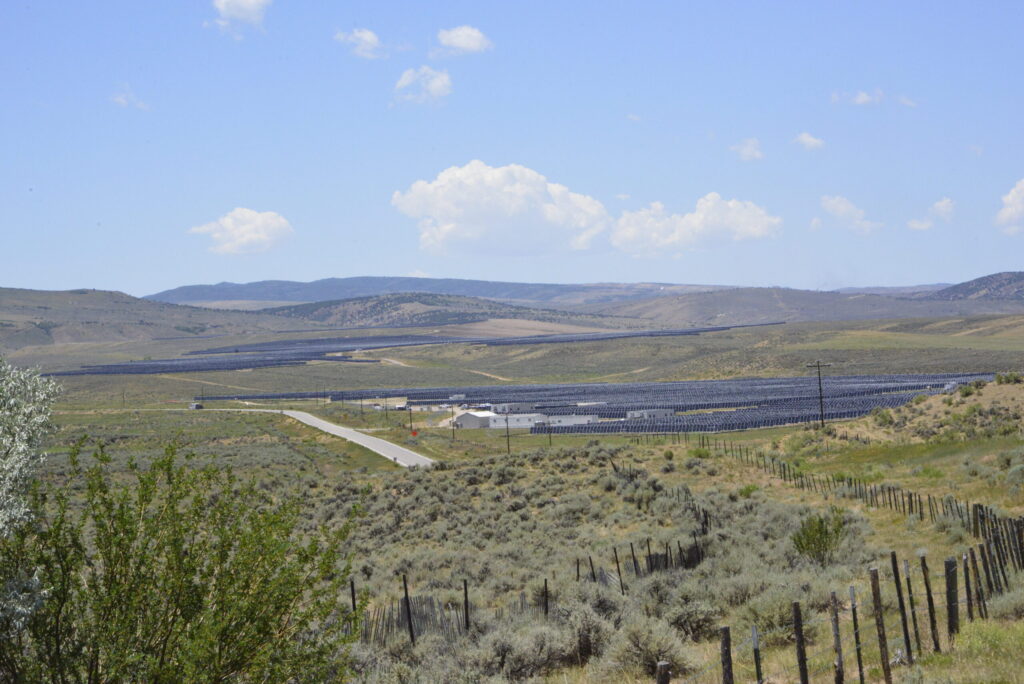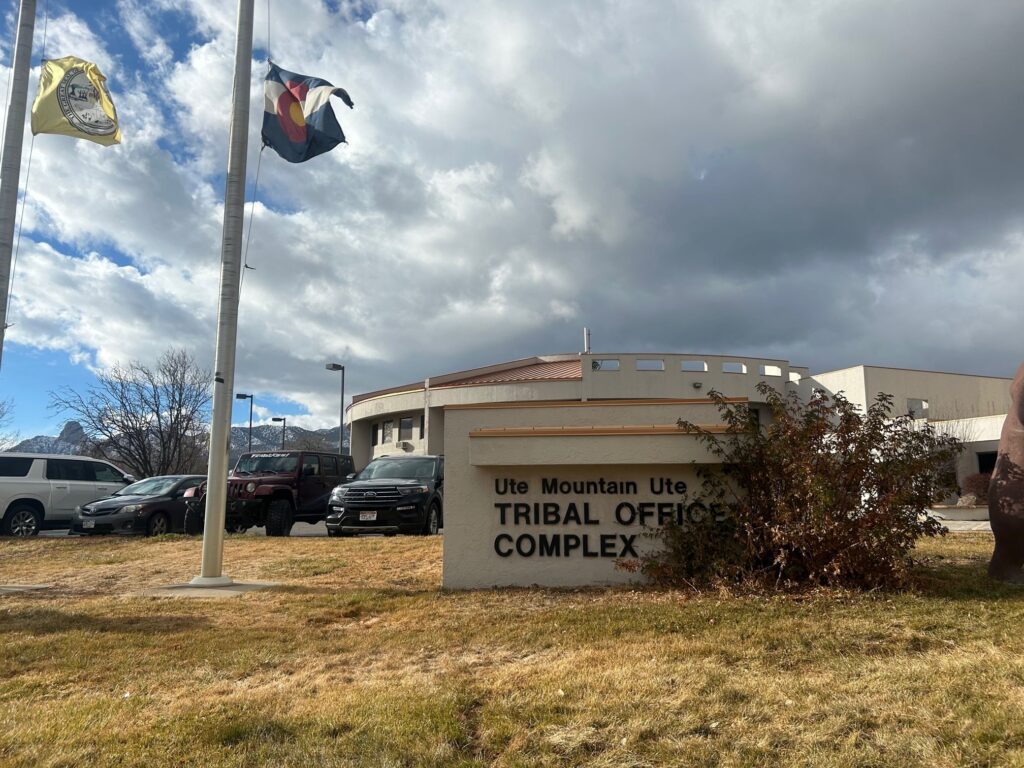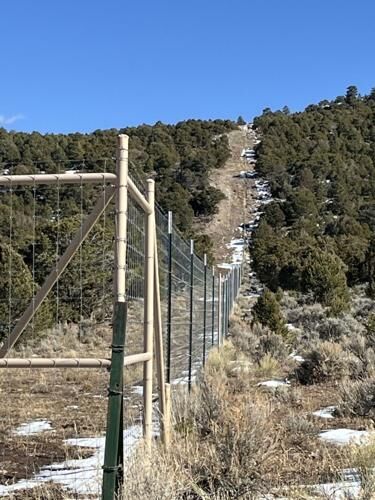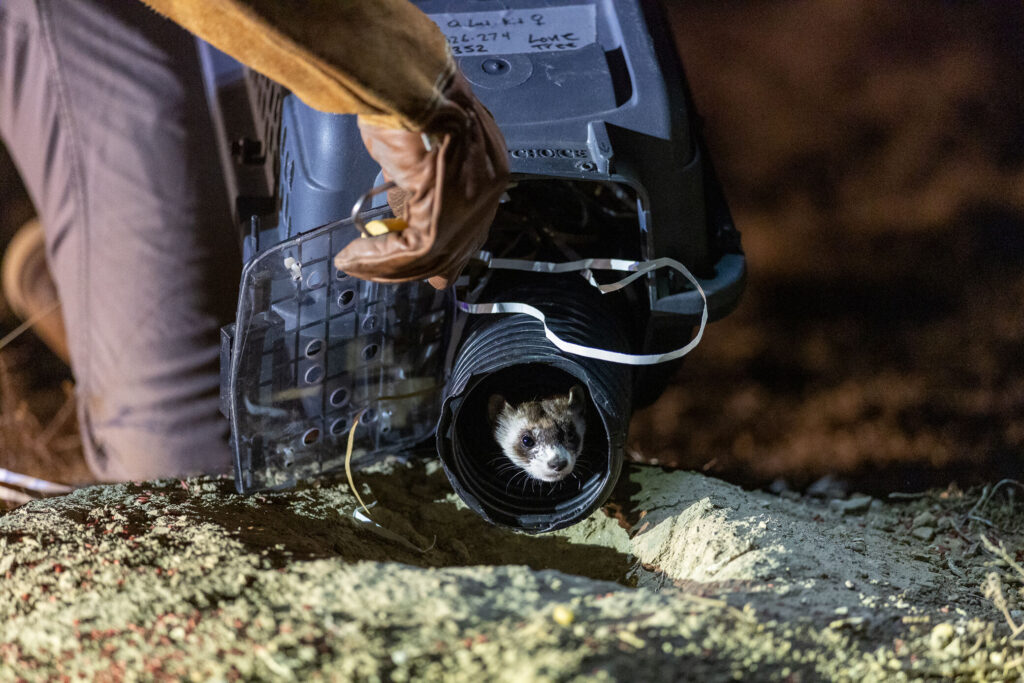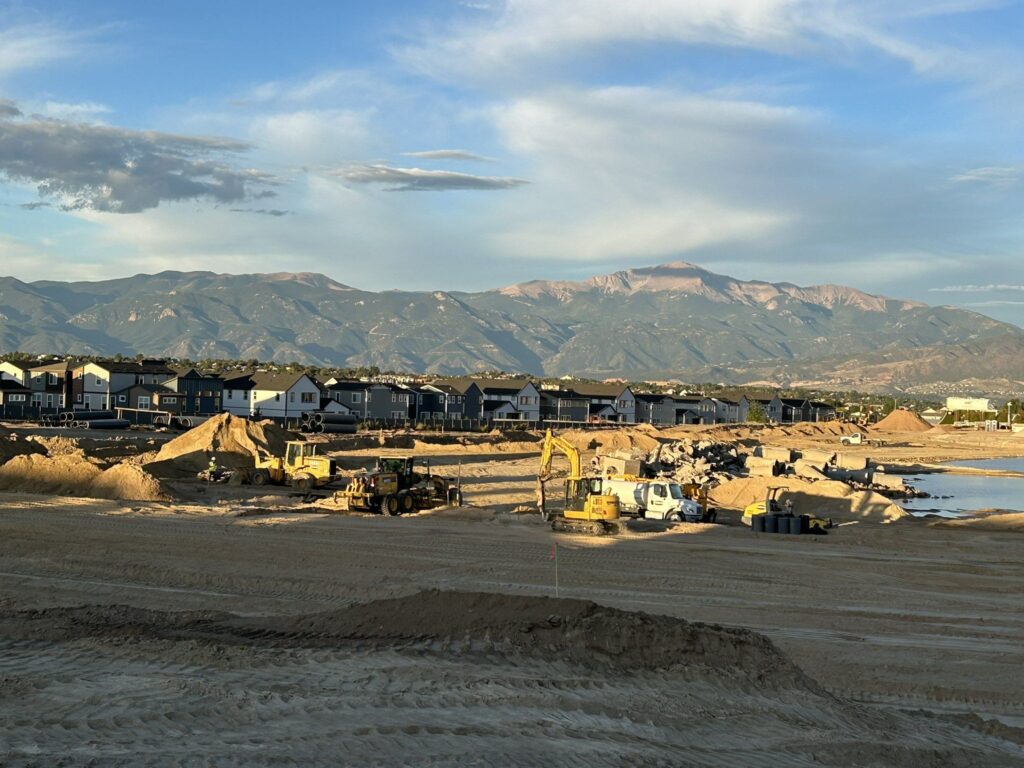Supreme Court justices could limit the scope of environmental protection laws in Uinta Basin oil railway case
U.S. Supreme Court justices appear poised to limit the scope of the nation’s premier environmental protection law in deciding the case of a proposed 88-mile railroad to haul oil from an oilfield in Utah through Colorado, some legal experts concluded following oral arguments on Dec. 10.
The case has the potential to affect decisions by federal agencies that would fall under the National Environmental Policy Act (NEPA). Notably, the core question asks how far afield in time, space, and regulatory authority a federal agency must go when examining the environmental impacts of something over which it has regulatory authority.
The federal Surface Transportation Board (STB) is the regulatory authority for railroads. Its mandate is to advance the public interest in support of an efficient, competitive, and economically viable surface transportation network that meets users’ needs.
Congress has determined that the public interest lies in advancing the nation’s rail network, said Ivan London, senior attorney at the Mountain States Legal Foundation, who filed an amicus brief on behalf of Western Energy Alliance and the American Forest Resource Council.
The NEPA has been used in the past, and this case, to “upset the public interest as described by Congress in various types of projects,” London said.
The objectors to the railroad used to transport oil products openly admit they are determined to stop it to prevent increases in oil extraction, which the railroad would deliver to refineries using the Union Pacific Central Colorado Line, from Utah’s Uinta Basin.
Supporters want the railroad to take products, including oil, both out of and into the basin to provide a needed alternative to shipping goods by truck.
Currently, truckloads of waxy crude oil travel back and forth over narrow, winding mountain roads to refineries in the Salt Lake City area. The Utah Department of Transportation reported that there have been dozens of truck accidents and spills on U.S. 40 and US 191 over the years.
The Center for Biological Diversity represented Colorado’s Eagle County before the D.C. Circuit Court of Appeals. The court’s 2023 decision held that the order authorizing the construction of the railway and the environmental impact report were “arbitrary and capricious” and “vacated” them. According to legal experts, this means the whole process must start from zero.
“The Uinta Railroad is a calamity in the making,” Ingrid Wussow, mayor of Glenwood Springs, told The Denver Gazette previously. “The D.C. Circuit properly found communities like Glenwood Springs that these oil trains would pass through face significant potential impacts from derailment, such as wildfire risk and devastating spills into the Colorado River — and that the federal government illegally failed to take these risks into account.”
Deeda Seed, senior public lands campaigner with the Center for Biological Diversity, previously told The Denver Gazette that environmental groups are intent on stopping any increase in extraction, shipping, and refining of the Uinta Basin’s waxy crude oil that the rail line would facilitate.
“The other set of concerns go to the greenhouse gas emissions that will come from the construction and operation of this railway — because it’s all predicated on quadrupling fossil fuel production in the Uinta basin,” Seed said. “We are concerned about these oil trains traveling anywhere.”
The Colorado Sierra Club, Eagle County and Glenwood Springs also invoked safety concerns about adding to the preexisting flow of oil trains on Union Pacific’s Central Colorado Line.
“As recent history has shown, driving rail tankers full of volatile crude oil down narrow canyons and into crowded Denver communities is a disaster waiting to happen”, said Noah Rott, a spokesperson for Colorado Sierra Club. “From start to finish, this plan needs to get snuffed out. Given the evidence, we trust the Supreme Court will do the right thing.”
The goal is to ‘use the process as the punishment’
According to the U.S. DOT Rail Equipment Accident/Incident Data dashboard, between 1975 and 2023, five instances occurred in Colorado on Union Pacific tracks, in which hazardous materials were released from a damaged railcar. The latest report was in 2014.
Eagle County raised concerns about “vibrations and noise” from trains damaging county historical sites along the Union Pacific Central Colorado Line, which, according to historians, has been operating since at least 1928, when the Moffat Tunnel under the Continental Divide was opened.
Objectors to the Uinta Basin Railway all along the Union Pacific tracks through Colorado also voiced concerns about the increase in rail traffic and the potential for derailments and oil spills.
The Union Pacific Central Colorado Line already runs a dozen or so trains each day through the Grand Junction to Denver corridor, which includes a trip under the Continental Divide through the Moffat Tunnel near Winter Park, according to Mike Jaixen, senior manager for corporate communications for Union Pacific. Jaixen declined to specify how many oil cars currently use the route, saying that the composition and cargo carried by trains on the route is confidential.
“The advocates in Seven County generally agree that the Court can make NEPA analyses significantly easier or harder depending on its view of the scope of agency authority,” said Michael Drysdale, a partner at law firm Dorsey & Whitney. “Because NEPA is purely procedural, the practical issues in Seven County are time and project risk. The more indirect and remote the impacts of a project are that an agency must study, the longer and more costly the study will be, and the more likely that a reviewing court will conclude that the agency made a mistake and require the agency to do more analysis.”
“The goal of Eagle County and the groups that oppose the railroad is to use the process as the punishment,” said London.
As Mountain States’ London read the DC Circuit opinion, the Surface Transportation Board cannot simply go back and correct the errors noted by the court but instead must start the entire process over again, including hearings, public input sessions and publication in the Federal Register, all of which can delay the project for years.
London said starting over erases 10 years of work and “makes no sense.”
During oral arguments at the Supreme Court, Seven Counties Coalition attorney Paul Clement said: “NEPA is a self-described procedural statute. It is designed to inform government decision-making, not paralyze it.”
Clement said NEPA has become the single most litigated environmental statute. Despite the board’s 3,600-page environmental impact statement addressing major impacts, minor impacts, downline impacts, and cumulative impacts, the DC circuit demanded more.
“It insisted that the board study the future project developments in the entire basin, the prospect of accidents and train lines hundreds of miles away and the effect on refineries in Gulf communities thousands of miles away,” said Clement.
The Biden administration’s Council on Environmental Quality found in 2023 that the average time for a NEPA review is seven years, and the length of a final environmental impact statement (EIS) was more than 740 pages. The council adopted new regulations limiting statements to 150 pages, increasing that page limit to 300 for unusually complex situations. The regulation also states the EIS cannot take more than one year to complete.
“There’ll be no trains carrying cargo other than oil,” said William Jay, arguing on behalf of Eagle County. “Every train leaving this basin is going to be carrying waxy crude oil. And so, under those circumstances where the rationale for the project is to permit unlocking more waxy crude oil development and where the board’s consideration of the benefits of the project is tied to that oil development, it follows that the board would at least consider what the environmental consequences of doing so would be.”
London disagreed, noting that the railroad is independent of the oil industry and can — and is required to — carry any cargo offered.
A common carrier
During oral arguments, Justice Sonia Sotomayor raised the issue of the railway’s classification as a common carrier, which means it cannot decide not to carry any commodities offered for transport, including, London said, agricultural products like cattle feed, building supplies and farming implements.
“It’s (common carrier status) says you have to carry all products and cargo and persons, then why is it within (the STB’s) purview to say or determine what the increase of refining will be and whether it’ll be damaging when there’s another agency that has the power to control that?,” Sotomayor asked. “It has no power to say, ‘Don’t refine the oil,’ (although) another agency might do that.”
In response, Jay said that the NEPA requires agencies to look at even harms that they cannot mitigate and harms that they do not regulate directly “precisely because they provide a springboard for public comment to the agency.”
“So, even if the agency doesn’t think that it would conclude that the harms outweigh the transportation merits, it allows the public to participate in the process, and it also allows those local air pollution regulators that you referred to, Your Honor, to essentially be aware of the consequence coming downstream,” he said.
“And the question is, I think, that Justice Kagan is asking, (is) to what extent does information about what happens in the refining process inform this board’s determination with respect to exercising that authority,” said Justice Ketanji Jackson. “I don’t understand why it matters if, as Justice Sotomayor pointed out, they’re a common carrier. They’re not allowed to discriminate as to what gets carried on the tracks. So, if they can’t say what gets carried, then what difference does it make that the refinery is putting out environmental effects to their decision as to whether or not to approve this?”
Justice Brett Kavanaugh brought up the issue of over-litigation and the role of the courts when it comes to second-guessing administrative decisions. He commented on the risks of overly aggressive courts taking a role that incentivizes agencies to do “3,000-page environmental impact statements.”
“I think that the concern raised though is when the agency has approved the project and a court comes in and says in this new, as you say, suite of statutes era and says even though the agency approved the project, even though the project and all the effects comply with all the substantive environmental laws that have been passed over the years, which regulate very extensively, obviously courts are going to come in and second guess,” Kavanaugh said.
Part of the board’s job is to apply the NEPA to projects to catalog, quantify and examine the potential environmental impacts of the proposal. Another aspect of its authority is to ensure that the rail project is economically feasible.
Congress decides ‘what’s in the public interest’
The Surface Transportation Board has no authority to regulate Texas emissions or even oil extraction in the Uinta Basin, London said. Its authority is only over railroad permitting, not concerns over how the cargo might be used.
“They did their best to get their heads around the issue, acknowledging that they have no idea if there is oil on this train, assuming there’s a train that’s ever on this rail line, that it might be refined somewhere in the world,” said London.
At that point, the issue gets too watered down from the railroad agency’s expertise in whether or not to grant a railroad permit or a license to authorize the construction and operation of a railroad, said London.
“The lower court wanted to have more analysis done of attenuated issues that could not have been controlled by the actual federal regulators dealing with the request for approval in front of them,” said London in an interview with The Denver Gazette.
London said the Surface Transportation Board recognized as an issue whether the railway would increase drilling in the Uinta Basin and examined it. It said it had no ability to predict what would happen with respect to oil drilling, issues about refining thousands of miles away or even in other countries, and that impacts on climate change were beyond its power to control what Seven County’s attorney Clement said were effects far separated in time and space from the railroad itself.
“They explained in hundreds of pages, maybe thousands of pages, if I remember right. And then they went forward with an approval of an application,” London said.
London pointed out that Congress creating and authorizing the Surface Transportation Board to make such judgments is a matter of public policy that it is only permitted to make.
“Congress has the job of deciding what’s in the public interest,” London said. “There’s the presumption in the underlying statute that building lines like this one is in the public interest.”
Michael Drysdale, a partner at the Dorsey & Whitney law firm, said: “This is one of the difficulties of doing the expansive development-scenario NEPA analysis the D.C. Circuit required. It would require the agency to imagine and estimate a wide range of induced development impacts.”
“During last week’s oral argument, the Justices wrestled with the recurrent problem of how far away and what kind of effects agencies should analyze in conducting NEPA analyses, and how they should consider such concepts as foreseeability, reasonableness, and proximate cause,” Drysdale said. “There seemed to be a consensus among the justices that D.C. Circuit had gone too far, and the reasonable foreseeability of effects, standing alone, is insufficient to require an agency to study such indirect impacts.”
The Associated Press contributed to this story.










